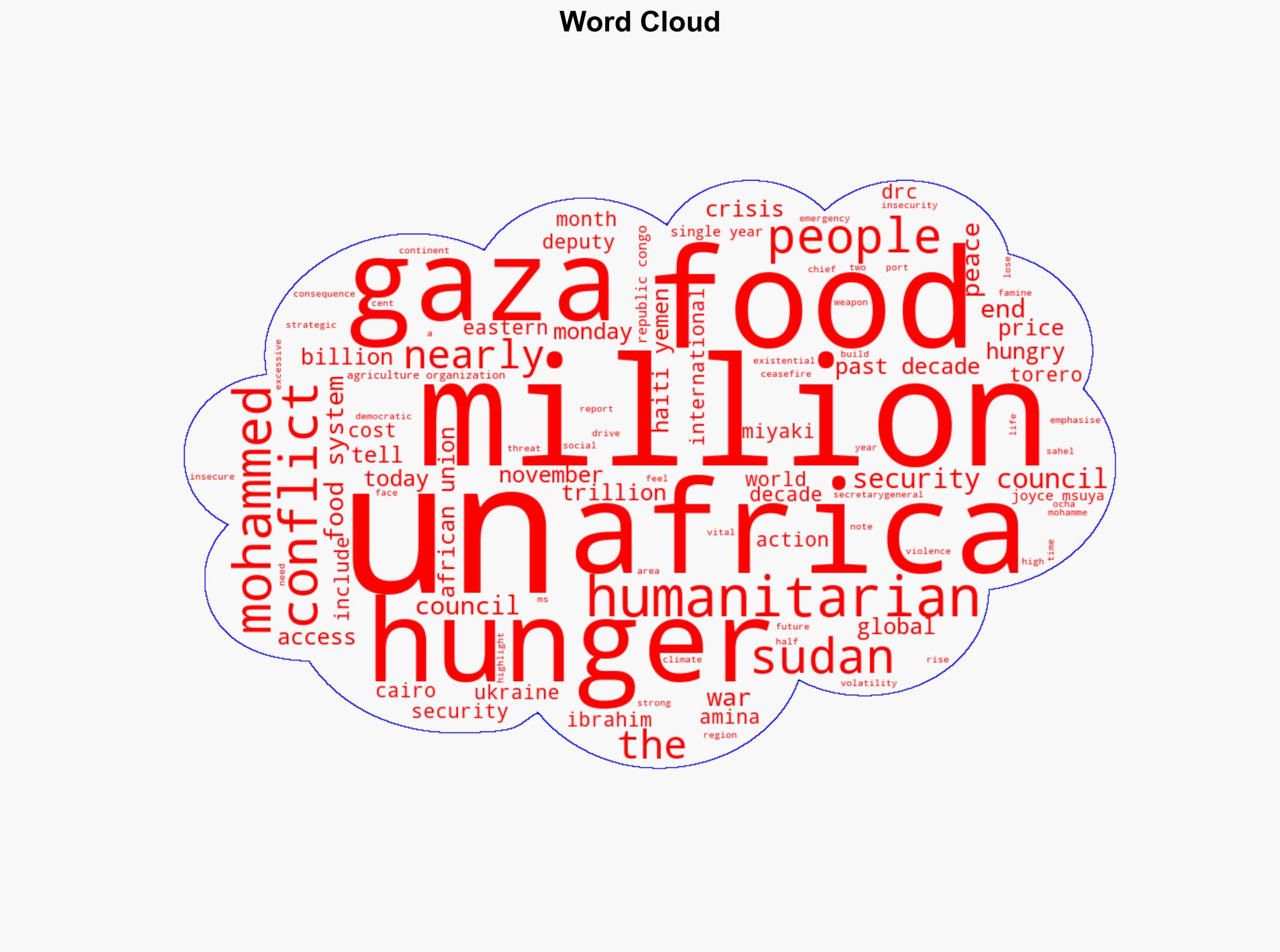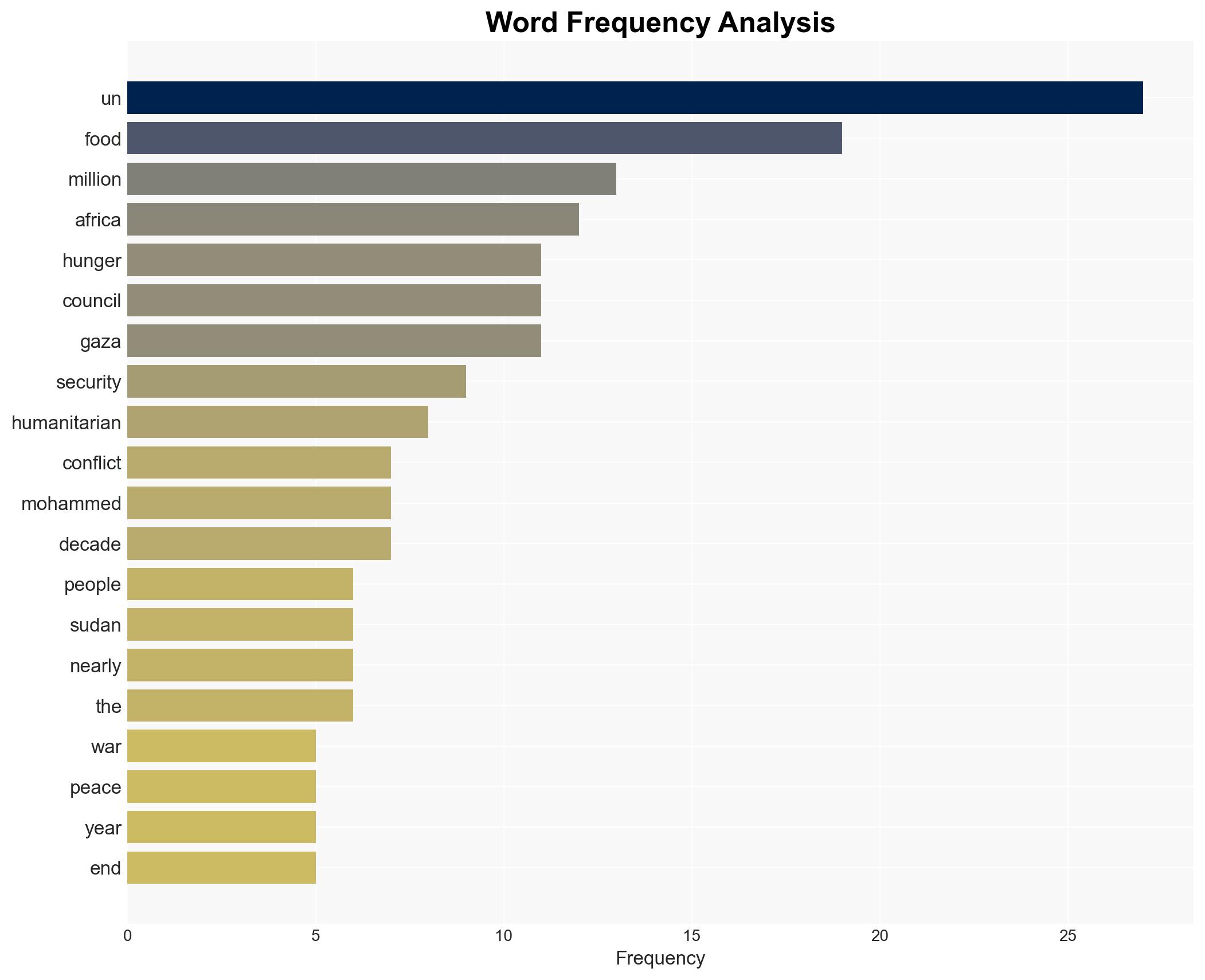Conflict and hunger ‘two faces of the same crisis’ UN deputy chief tells Security Council – Globalsecurity.org
Published on: 2025-11-18
AI-powered OSINT brief from verified open sources. Automated NLP signal extraction with human verification. See our Methodology and Why WorldWideWatchers.
Intelligence Report: Conflict and Hunger as Interlinked Crises
1. BLUF (Bottom Line Up Front)
With a high confidence level, the most supported hypothesis is that conflict and hunger are mutually reinforcing crises that exacerbate global instability. Immediate strategic action is required to enhance humanitarian access and invest in resilient food systems to mitigate these interconnected threats.
2. Competing Hypotheses
Hypothesis 1: Conflict is the primary driver of hunger, with war and violence disrupting food systems and leading to widespread food insecurity.
Hypothesis 2: Hunger is a significant driver of conflict, where food insecurity leads to social unrest and exacerbates existing tensions, potentially escalating into violence.
Assessment: Both hypotheses are plausible and likely interdependent. However, Hypothesis 1 is more strongly supported by evidence, as armed conflict directly disrupts agricultural production and supply chains, leading to immediate food crises. Hypothesis 2 is also valid but often manifests as a secondary effect where existing conflicts are intensified by food scarcity.
3. Key Assumptions and Red Flags
Assumptions: It is assumed that humanitarian access will remain a challenge due to ongoing conflicts and political barriers. Additionally, it is assumed that climate change will continue to exacerbate food insecurity.
Red Flags: The use of food as a weapon in conflict zones, such as deliberate starvation tactics, is a significant red flag indicating potential escalation. Bureaucratic impediments to humanitarian aid are also concerning.
4. Implications and Strategic Risks
Failure to address the hunger-conflict nexus could lead to cascading threats, including increased migration pressures, regional destabilization, and heightened global food price volatility. There is a risk of political instability in regions heavily dependent on food imports, as seen in urban unrest linked to food price spikes.
5. Recommendations and Outlook
- Actionable Steps: Enhance diplomatic efforts to secure humanitarian access in conflict zones. Invest in climate-resilient agricultural practices and infrastructure. Encourage international cooperation to stabilize food prices.
- Best Scenario: Successful international intervention leads to stabilized food systems and reduced conflict intensity.
- Worst Scenario: Escalation of conflicts exacerbates food crises, leading to widespread famine and regional instability.
- Most-likely Scenario: Continued interplay between conflict and hunger, with periodic humanitarian interventions mitigating but not resolving the crises.
6. Key Individuals and Entities
Amina Mohammed (UN Deputy Secretary-General), Joyce Msuya (UN Coordination Office), Dr. Ibrahim Miyaki (AU Special Envoy for Food Systems), Torero (Chief Economist, FAO).
7. Thematic Tags
Regional Focus, Regional Focus: Africa, Middle East, Global Food Security
Structured Analytic Techniques Applied
- Causal Layered Analysis (CLA): Analyze events across surface happenings, systems, worldviews, and myths.
- Cross-Impact Simulation: Model ripple effects across neighboring states, conflicts, or economic dependencies.
- Scenario Generation: Explore divergent futures under varying assumptions to identify plausible paths.
Explore more:
Regional Focus Briefs ·
Daily Summary ·
Support us





